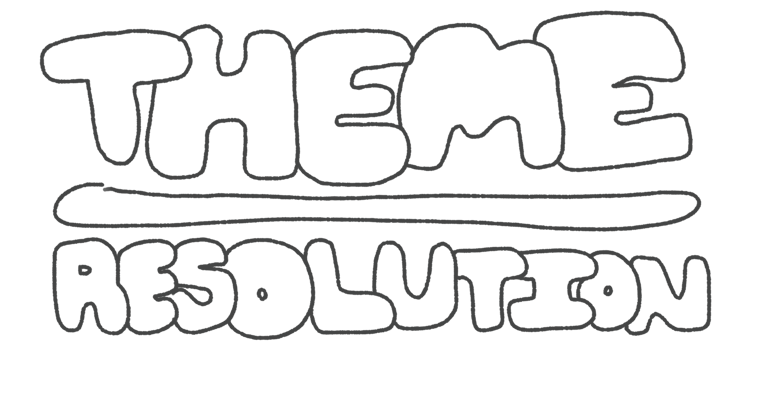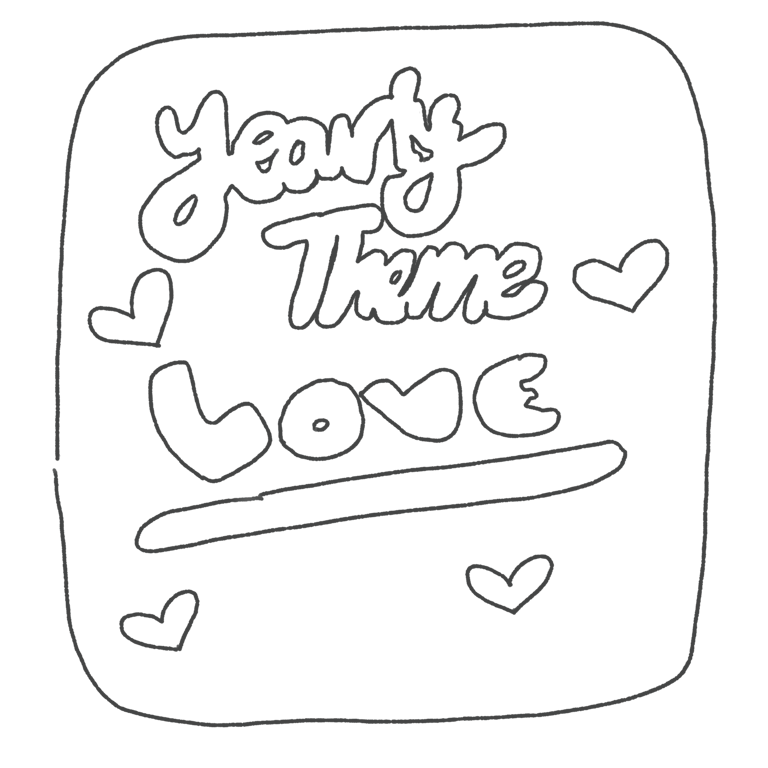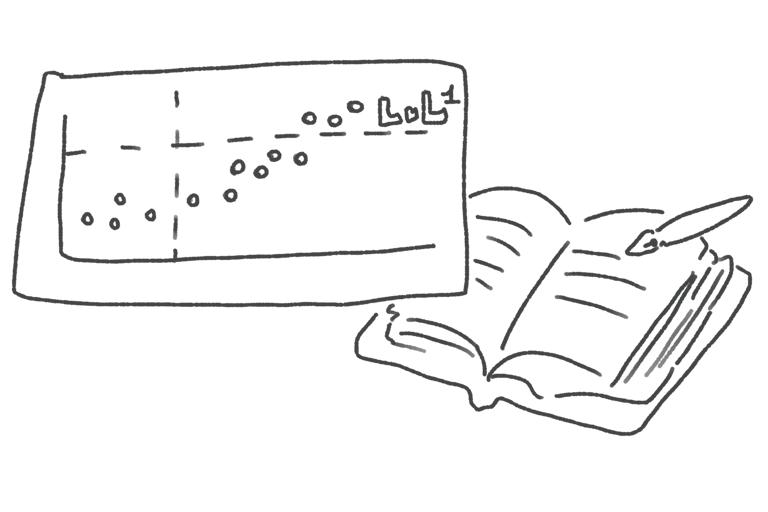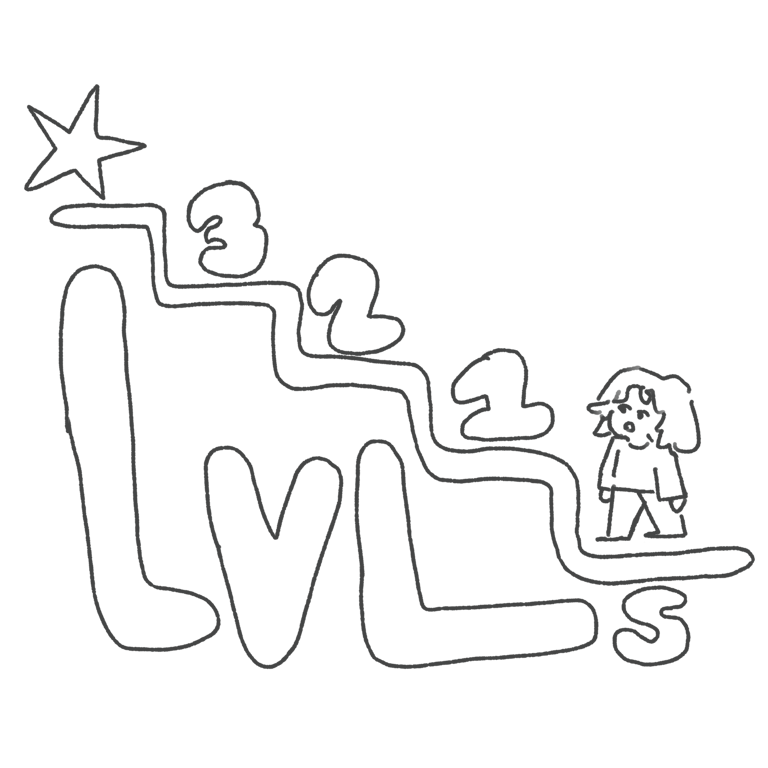New Year's Resolution Alternative
It's the new year and, as usual, it's the perfect time to make an unreasonably typical resolution with no actual plan to complete it. We end up getting upset with ourselves after three months of non-productivity and eventually forget we made the resolution—only to be reminded of our failure when the next new year rolls around. It is the new year after all, and it's time to escape this bad habit.
Wyn
1/10/20257 min read
An Idea
For the past couple of years, with all that has been going on, I decided not to succumb to this bad habit and not make a new year's resolution. I think that's a valid choice to protect your mental health for periods of time. If you're reading this and don't want to make a New Year's resolution, go ahead and live your life in peace and spend time with family and friends. For those willing to try this ritualistic goal-setting event this year, I have some particular tricks to share. Before I explain my goals, let me explain my approach to this clean slate.
Theme not Resolution?
The first thing I'm going to do is not make a resolution for the year but rather create an overarching theme that includes many areas of priority and personal goals. This idea comes entirely from CGP Grey and Myke Hurley from the Cortex Podcast. The main concept is that the theme guides smaller decisions throughout the year, ensuring continuous improvement without the restriction of concrete resolutions. While this might not seem like a traditional goal, in theory, this method can be more powerful than a simple yearly resolution.
The theme's main purpose is to guide quick decisions in the moment, helping you get closer and closer to your personal goals. This method also releases some of the pressure that comes with resolutions—if you read 20 books instead of 30, you haven't failed. This flexibility helps maintain long-term productivity.
How It Works
Let's say your theme is physical health. Life may throw curveballs, but hey, at least you're prepared for flu season (joking)! You'll start by defining what health means to you. Whether health means changing your weight, doing pull-ups, or being able to hold your baby for longer periods—that's up to you. Your specific goals then fall under that health theme. With this theme in mind, you can shape the behaviors necessary to succeed day by day.
For example, if your theme includes improving cardiovascular health, you might be tempted to set an extreme goal like running every day. However, with the theme method, you might instead think, "I need to stay on theme." So when you're deciding what to do, you can choose to walk, run, or swim whenever you have time—whatever keeps you moving toward your theme.
Small Gamification
Additionally, I've added aspects that align with a behavioral approach to goals. The smaller theme-related goals are created as milestones for theme alignment. I call these smaller resolution goals "levels" because they don't end at completion. Instead, they're steps toward an ultimate routine.
Inside of the theme are levels that serve as stepping stones toward accomplishment. The goals are somewhat based on S.M.A.R.T. Goals (Specific, Measurable, Achievable, Relevant, and Time-Bound), but in this context, some aspects are already handled by the theme and enhanced to become levels. However, levels have distinct characteristics that set them apart from traditional S.M.A.R.T. goals.
What Are Levels?
Levels work like a game where you continuously progress to the next level, with each one becoming more challenging. Unlike SMART goals that end upon completion, levels remain active and build upon each other throughout the year to align more closely with your theme. Another key difference is that level-making starts with establishing a baseline. It wouldn't make sense to set a goal you can already achieve—that would be too easy. However, if your baseline shows your goals are too ambitious, you might need to reconsider your ultimate target.
Health Levels Not goals
Let's revisit our health theme example. Say you want to run a mile in less than 10 minutes. Your baseline shows you currently run a mile in 25 minutes on average. A SMART goal might be "run a mile in under 10 minutes by this time next year," but levels break this down differently. With levels, you might say: "I currently run a 25-minute mile on average, so for every 5-minute decrease in my last 3 runs, I'll celebrate by going to the movies—and I'll keep going until I've maintained my target pace for at least 3 runs."
Notice how the levels not only acknowledge the goal but create achievable steps toward it. The goals include rewards for achievement and specify what success really means. It's not just about running a mile in ten minutes once—it's about consistently maintaining that ability.
Reading Levels Not Goals
Consider another example comparing Levels to SMART Goals: If your reading goal is to read 5 books per month, a SMART goal might state "I will read 5 books next month to improve my reading." After reaching this goal, you might continue reading 5 books monthly—or never read again that year. If you miss the SMART goal, you might try again, but you're just as likely to give up entirely, thinking "I've already tried reading, so why bother?" Similarly, if you read only 3 or 4 books, you might consider the whole challenge a failure, disregarding your significant progress.
As the New Year approaches, many of us feel drawn to resolutions that promise to transform our lives. While traditional goals focus on specific outcomes, there's an alternative approach emphasizing progress, leveling, and sustained growth. This article explores how centering your New Year's resolutions around levels instead of rigid goals can promote lasting improvement and motivation.
Understanding the Problem with Traditional Resolutions
The conventional New Year's resolution typically follows the SMART goal format: Specific, Measurable, Achievable, Relevant, and Time-bound. You might resolve to lose 10 pounds by March or read five books monthly. However, these goals often create a "black and white" mindset—you either succeed completely or feel like a failure if results don't perfectly align. This can lead to discouragement and abandoning our efforts entirely.
The Power of Levels
In contrast, you start with a baseline—say, reading 5 books in the last 8 months. You might track how long it takes to read one book, discovering you need about a week per book or can read 100 pages daily on average. This baseline information helps set appropriate levels. Your levels might begin with reading 150 pages three days in a row or finishing 3 books in two weeks. Each time you reach a level, you reward yourself with a night out or watching a favorite show. Eventually, you might reach 5 books monthly, but more importantly, you're reading consistently more than before.
Documentation
A crucial aspect of this new year's system is documentation. You need to stay consistently aware of your goals, and the best way is to track your progress. While the Cortex podcast has their version of documentation that makes sense to use, if you're like me and prefer things a bit more detailed with the addition of levels, here's how I recommend documenting themes and levels.
Make a Poster or Mood Board
After choosing my theme, I gather everything necessary to keep it visible. This goes beyond just journaling—I create an actual poster/mood board. While I'll make my own poster, you could simply print your theme on letter-sized paper or make it your phone's home screen. The key is making your theme visible every single day—and I mean every day.
Visualize Your Levels
The next part of documentation involves measuring your levels. This can mean journaling, using a spreadsheet, or charting your daily level progress. While you don't need to complete a level every day, tracking your actions helps you stay aware of your progress toward completing levels and improving within your theme. I'll use both a spreadsheet and my Hobonichi planner to track my level progress.
My Theme for 2025:
Soft MEsearch
My theme for 2025 is "Soft MEsearch." The "soft" aspect means being graceful, mindful of my words, and agreeable while remaining firm in my convictions—professional and honest in both work and personal life. While these qualities could be explored further, they form the foundation for MEsearch—which involves discovering the intricacies of my behavior through self-research and applying that knowledge. Together, my theme focuses on developing values I want to express through my behavior to become my best self.
The First Couple of Levels
My levels so far are:
For every 3 intense artworks I create, I'll reward myself with a week's break from extra tasks (giving myself quality time to recharge).
Improve writing skills by establishing a baseline for my regular writing output (this will be challenging) and increasing it by ten percent incrementally until I'm writing 50% more than baseline and maintaining that for 3 weeks.
Learn which foods support workout performance to maintain exercise as baseline, then plan to reward myself for every 2 weeks of consistency.
While these levels are just the beginning, once I reach maintenance phase I can add more goals or update existing ones—like establishing a daily routine or reducing screen time. This approach doesn't limit me from improving other areas like family time or sleep schedule.
In Conclusion
Themes and levels offer a fun and unified approach to personal growth and productivity in the new year. This beats frivolously working througha list of resolution ideas or mindlessly using the fresh start of January to hire a Holistic Health Coach for sleep advice or emergency fund planning.












